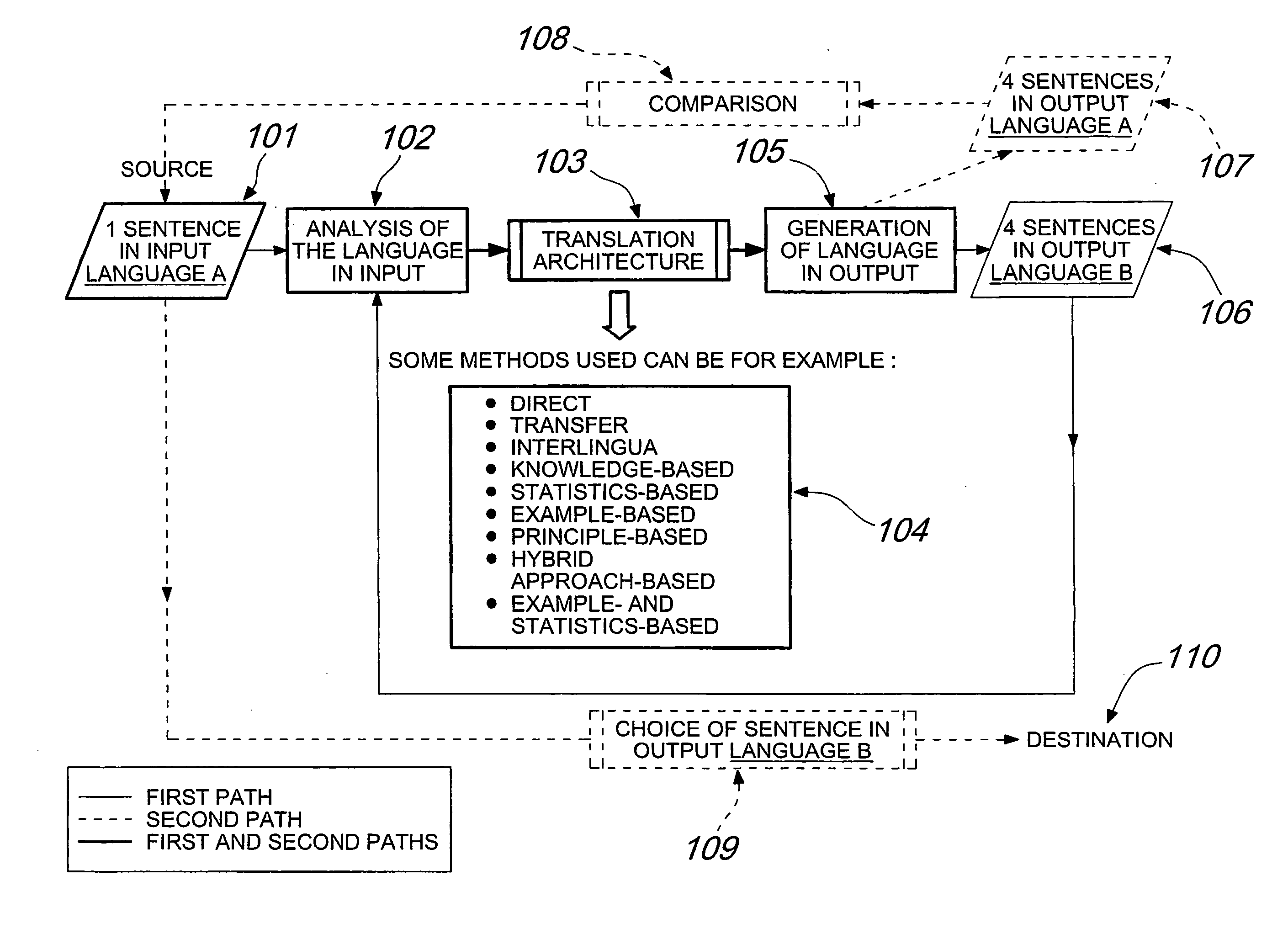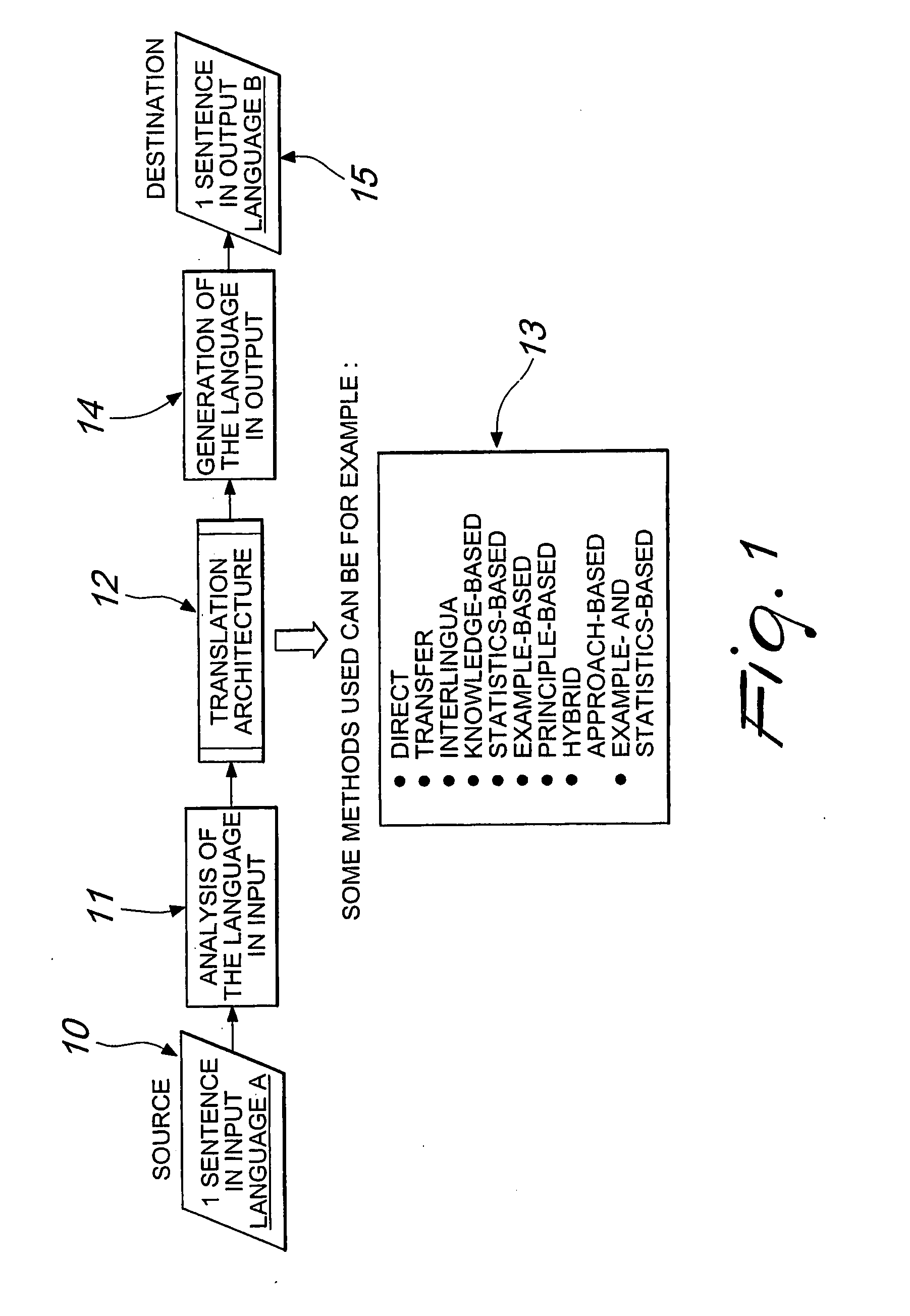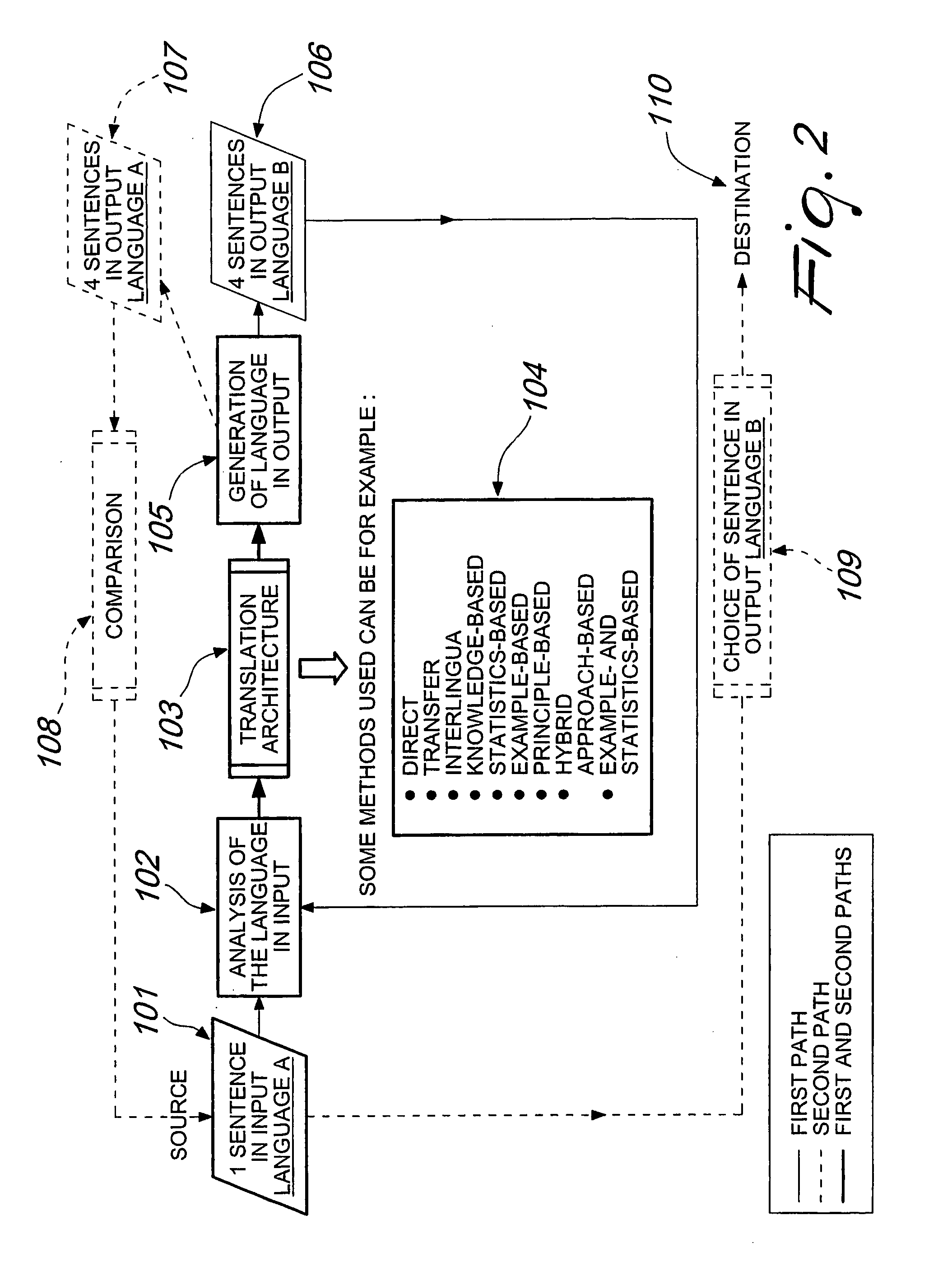Method for Automatic Translation From a First Language to a Second Language and/or for Processing Functions in Integrated-Circuit Processing Units, and Apparatus for Performing the Method
a technology of integrated circuit processing and automatic translation, which is applied in the field of automatic translation from a first language to a second language and the processing function of integrated circuit processing units, and the apparatus for performing the method. it can solve the problems of selection of the correct semantic interpretation, failure to yield appreciable results, and the current computer microprocessor reveals a series of functional limitations
- Summary
- Abstract
- Description
- Claims
- Application Information
AI Technical Summary
Benefits of technology
Problems solved by technology
Method used
Image
Examples
example 1
[0163]source in language A:[0164]read this and you will probably run to the chemist's into a panic to stock your medicine cabinets with the latest patent cures.
[0165]Four sentences in output, language B:[0166]1) Leggete che probabilmente questo e voi correrete dal chimico in panico per immagazzinare il vostro armadio di medicina con le ultime cure brevettate.[0167]2) Legga questo e lei probabilmente correrà il chimico dal panico per approvvigionare il suo armadietto di medicina con le ultime cure patenti.[0168]3) Leggete questo e probabilmente correrete in farmacia presi dal panico per riempire l'armadietto dei medicinali con le ultime specialità farmaceutiche.[0169]4) Legga questo e lei correrà probabilmente ii chimico in panico approvvigionare il suo armadietto delta medicina con le cure patenti e ultime.
[0170]Four sentences in output, language A (back-translated sentences):[0171]1) You read that this and you will probably run to the chemist in panic to store your medicine wardrob...
example 2
[0181]Source in language A:
[0182]I would be obliged if you would advise me of the planned delivery date in advance.
[0183]Four sentences in output, language B:[0184]1) Io si obbligherebbe se lei potesse mettermi al corrente della data di consegna progettata in anticipo.[0185]2) Le sarei riconoscente di comunicarmi in anticipo la data prevista per la consegna.[0186]3) Si obbligherebbe se lei potesse consigliarmi della data della consegna progettata in anticipo.[0187]4) Sarei costretto se poteste informarmi sulla data di consegna programmata in anticipo.
[0188]Four sentences in output, language A (back-translated sentences):[0189]1) I would force himself if she could put me to the current one of the deliver planned date in advance.[0190]2) I would be obliged if you would inform me of the planned delivery date in advance.[0191]3) One would force if she could recommend me of the delivery date planned in advance.[0192]4) I would be forced if you could inform me about the delivery date plan...
example
Sum of Two Numbers
[0275]Source: two numeric values in input
A→01010101B→01010111
30 microinstructions obtained on the basis of the first logic, in output:
110101111210101110310100111410101011510100001610100000710101000810101010910101001101010011011111111001211101100130111110014101111001500011100160000110017100011001810101100191001110020011011002101111110220001111123000011112410101100250000011126111010012710111001281111111129011111113000111111
30 microinstructions obtained on the basis of the second logic system, in output:
10001110001010111200001100010101113100011000101011141010110001010111510011100010101116101011110101011171010111001010111810100111010101119101010110101011110101000010101011111101000000101011112101010000101011113011110001010111141010100101010111151010011001010111161011110001010111171110100101010111180011011101010111191110110001010111201111110001010111211010101001010111221111111101010111231011100101010111240101010101010111250111111101010111260011111101010111270011001101010...
PUM
 Login to View More
Login to View More Abstract
Description
Claims
Application Information
 Login to View More
Login to View More - R&D
- Intellectual Property
- Life Sciences
- Materials
- Tech Scout
- Unparalleled Data Quality
- Higher Quality Content
- 60% Fewer Hallucinations
Browse by: Latest US Patents, China's latest patents, Technical Efficacy Thesaurus, Application Domain, Technology Topic, Popular Technical Reports.
© 2025 PatSnap. All rights reserved.Legal|Privacy policy|Modern Slavery Act Transparency Statement|Sitemap|About US| Contact US: help@patsnap.com



